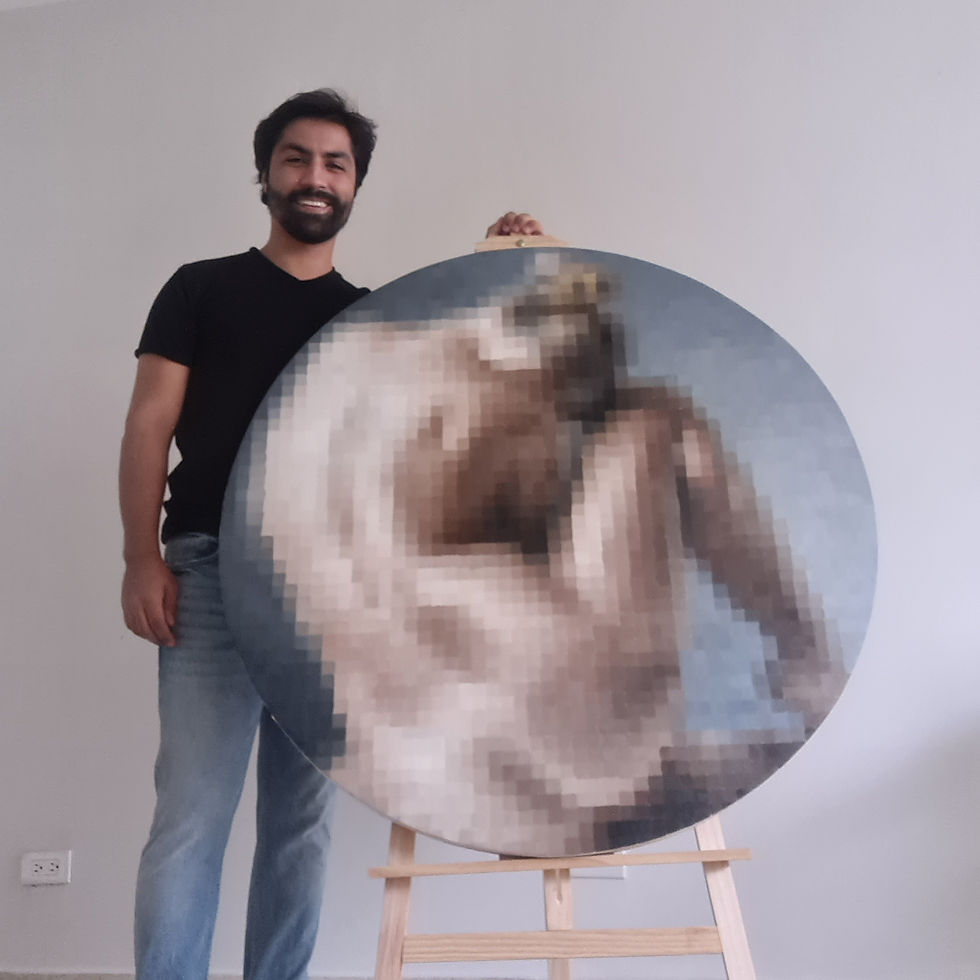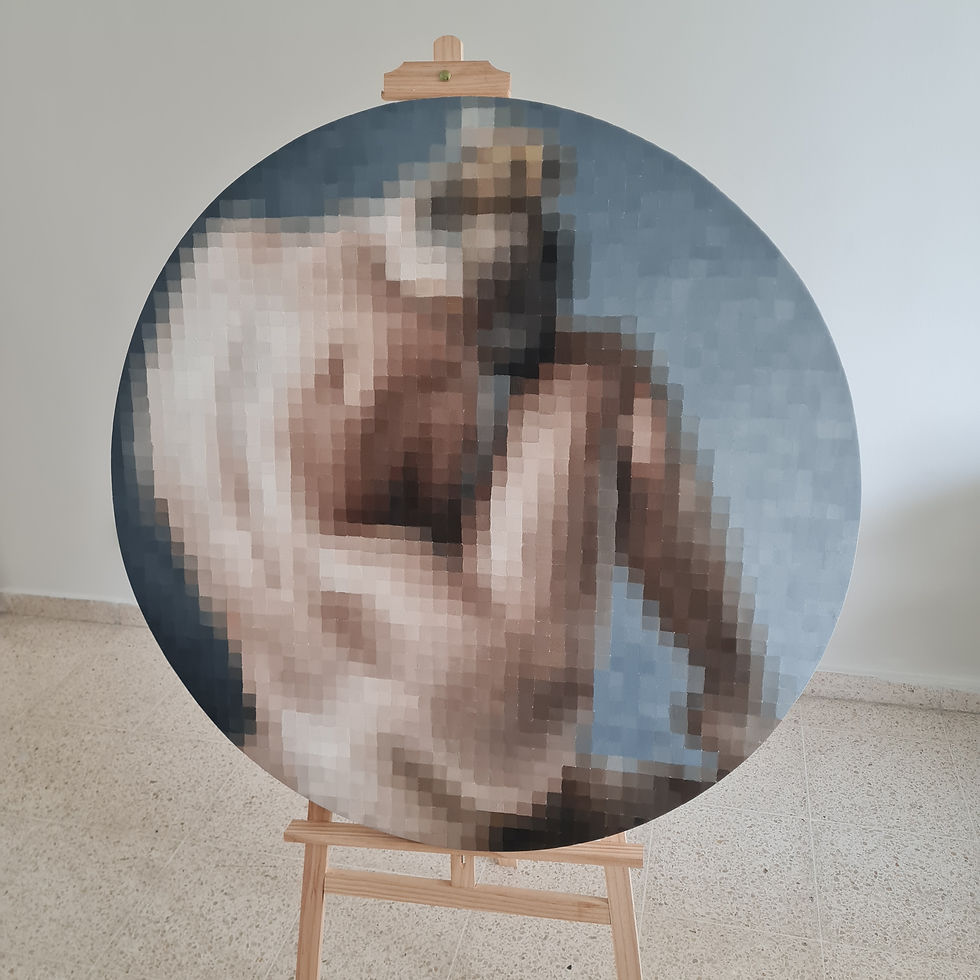Reflections on Birth, Rebirth, and Transformation: Nativitas Novae Feminae
- Rodrigo Méndez
- Mar 27, 2023
- 5 min read

I have always been fascinated by the themes of birth, rebirth, and transformation in art, and how they are strongly attached to femininity. These themes have been explored by artists throughout history, from classical mythology to contemporary works.
The representation of female nudity in art is not a new concept and has been present in different cultures and time periods throughout history. From ancient fertility goddesses to the nude figures in Renaissance paintings, the female form has been a subject of fascination for artists and viewers alike. The representation of birth, rebirth, and transformation in art has traditionally been associated with femininity. It has been used to celebrate the female experience because they are inherent parts of it. Women have the ability to give birth, nurture and transform, and create new life. In this sense, the depiction of these themes in art can be seen as a celebration of the power and resilience of women, and a way to reclaim the female form from objectification.
Femininity, Birth, Rebirth, and Transformation in Art History
From the idealized forms of Greek goddesses to the raw and unapologetic depictions of contemporary artists, the representation of the female form has evolved and shifted over time.
In ancient Greek and Roman art, female nudity was often used to celebrate and idealize the female form. Goddesses such as Venus and Aphrodite, who represented love, sex, and rebirth, were depicted in graceful and sensuous poses, with idealized proportions and flawless skin. These depictions were often meant to evoke a sense of divine beauty and grace and were celebrated as an expression of the feminine ideal.
However, as we move forward in time, we begin to see a shift in the representation of the female form. In the Renaissance, for example, female nudes were often depicted in more naturalistic poses, with an emphasis on anatomical accuracy and the play of light and shadow on the body. This more realistic approach to the female form was influenced by a growing interest in the study of human anatomy, and a desire to depict the body in a more realistic and accurate way.
A combination of these classical ideals mixed with the renaissance approach can be most famously appreciated in Botticelli's "The Birth of Venus". In classical mythology, one of the most iconic depictions of birth and rebirth is the story of the goddess Venus, who is born from the sea foam. This image has been depicted in countless works of art throughout history, nevertheless Boticelli’s "The Birth of Venus" has to be the most recognizable.

*"The Birth of Venus" (1485–1486) by Sandro Boticelli
In modern and contemporary art, artists have continued to explore themes of birth, rebirth, and transformation in new and innovative ways. From the bold and unapologetic nudes of artists such as Frida Kahlo and Cindy Sherman, to the more abstract and conceptual works of artists such as Tracey Emin and Jenny Saville, the representation of the female form has become more diverse and nuanced. Dali However, decided to explore birth, rebirth, and transformation in a different way.
Femininity, Birth, Rebirth, and Transformation in Dali's "Geopoliticus Child Watching the Birth of the New Man."

*"Geopoliticus Child Watching the Birth of the New Man" (1943) by Salvador Dalí
One such work that has always captured my attention is Salvador Dali's "Geopoliticus Child Watching the Birth of the New Man."
Painted in 1943, "Geopoliticus Child Watching the Birth of the New Man" is a surreal and thought-provoking work that explores the themes of birth, rebirth, and transformation in a way that is both unsettling and profound. In the painting, we see a child watching as a new man emerges from an egg, surrounded by a chaotic and surreal landscape.
The birth of the "New Man" can be interpreted as a symbolic rebirth of humanity, and the child watching can represent the future and the potential for transformation. Furthermore, the egg itself can be seen as a symbol of the feminine, as it represents birth, fertility, and the potential for creation. Overall, while the central figure may be male, "Geopoliticus Child Watching the Birth of the New Man" still explores themes of birth, rebirth, and transformation from a broader perspective that includes both masculine and feminine elements.
Birth, Rebirth, and Transformation in my art - "Nativitas Novae Feminae"
It was December 2021 when I started painting what would become “Nativitas Novae Feminae”. 2021 was a year full of changes in my life. I moved back to my hometown of Panama with my future wife and 2 cats in the middle of the last set of covid lockdowns imposed by the government. It was forbidden to leave the house on weekends, and there was a nationwide curfew after 9 pm. It was tough to show my partner our new home when we couldn't even leave the house, tensions were high. Especially when considering that in Colombia, COVID restrictions were in comparison almost non-existent.
Things got a lot more complicated when my partner’s grandmother’s Alzheimers got worse. I remember doing our best to make sure she could visit every 3 months or so. But travel was horrible because the government was holding all passengers coming from South America for 3 to 4 days hostage in a Hotel to “avoid” the further spread of Covid. I was desperate, how can I show my partner we made the right choice to move to this beautiful country when the government was determined to only show her the worst?
Then it happened. Her grandmother passed away, a moment she had been dreading for as long as I had known her. I don't have to tell you how hard death in the family hits everybody it touches. Especially during COVID, when even access to the cemetery was restricted.
Then, when the emotional toll was at its highest peak, vaccines arrived, and things were starting to slowly get back to “normal”. If the first half of 2021 was the death of my life so far, the second half could be seen as the birth of my new life.
For starters, my now wife and I made it through the turbulence and finally were able to get married. As COVID restrictions were lifted, I was able to show her the beauty of this new country we were living in.
My professional life as an artist saw a major rise. As I was accepted into the most exclusive and important galleries in the country and started to get invitations to major shows, auctions, and exhibitions. At the end of the year, a curator offered me the chance to have my first solo exhibition “Cuadro a Cuadro”.
"Nativitas Novae Feminae"

*"Nativitas Novae Feminae" (2022) by Rodrigo Mendez
"Nativitas Novae Feminae", explores similar themes of birth and transformation but goes back to a more feminist perspective. In this work, we see a different kind of Venus - one that is stripped of the romanticism and idealization of the Renaissance, and instead, presented in a raw, unapologetic form. The pixelation adds a layer of digital abstraction as if the woman's body is being filtered through a computer screen, challenging the viewer to question their own relationship with technology and the female form. I aimed to subvert traditional notions of beauty and reveal the complexity and power of the female body. The circular canvas adds another layer of symbolism, not only does it serve as the egg from where this Venus is about to be born, but it also represents the cyclical nature of life and the constant process of renewal and transformation.

This piece represents the birth of my life as a fully-fledged professional Fine artist brought by the transformation my life had during the COVID pandemic, it was a major feature in my first solo exhibition and is currently available at Galeria Habitante
If you are interested in learning more about my art and my creative journey, be sure to subscribe to my blog. As a subscriber, you will receive exclusive access to new content and updates about my latest projects, as well as behind-the-scenes insights into my creative process.






Comments